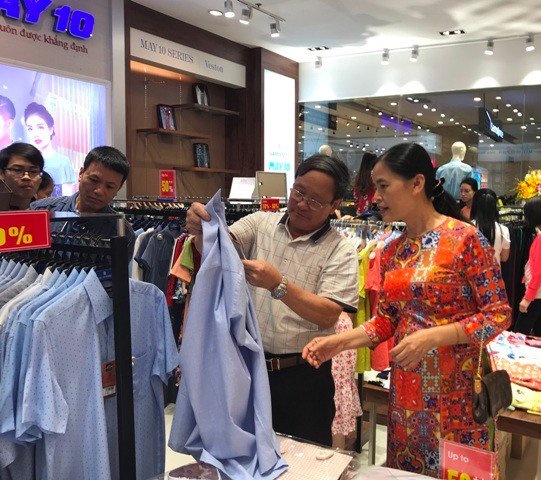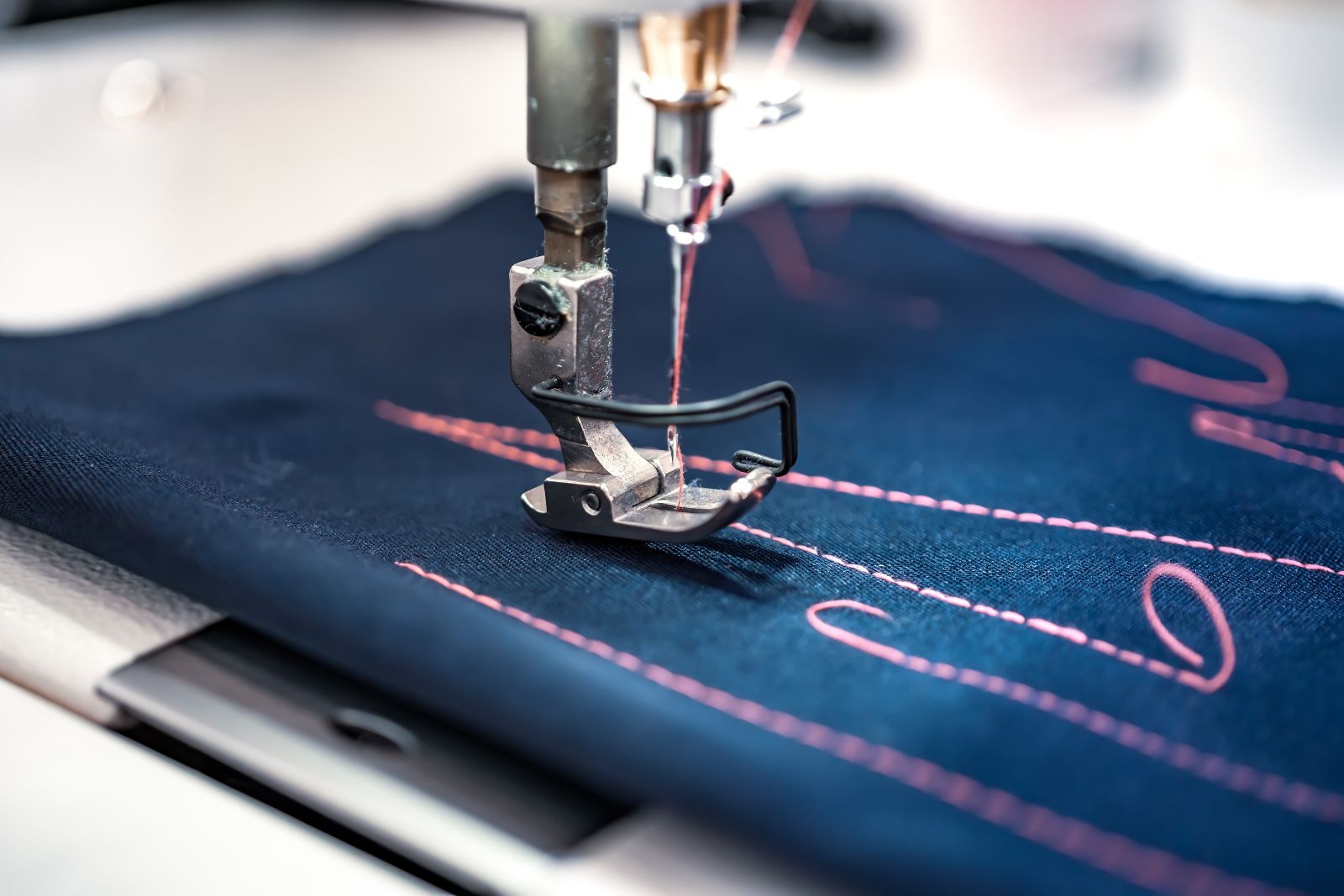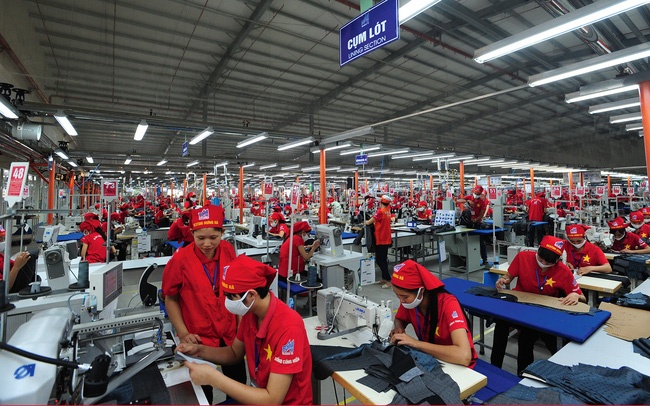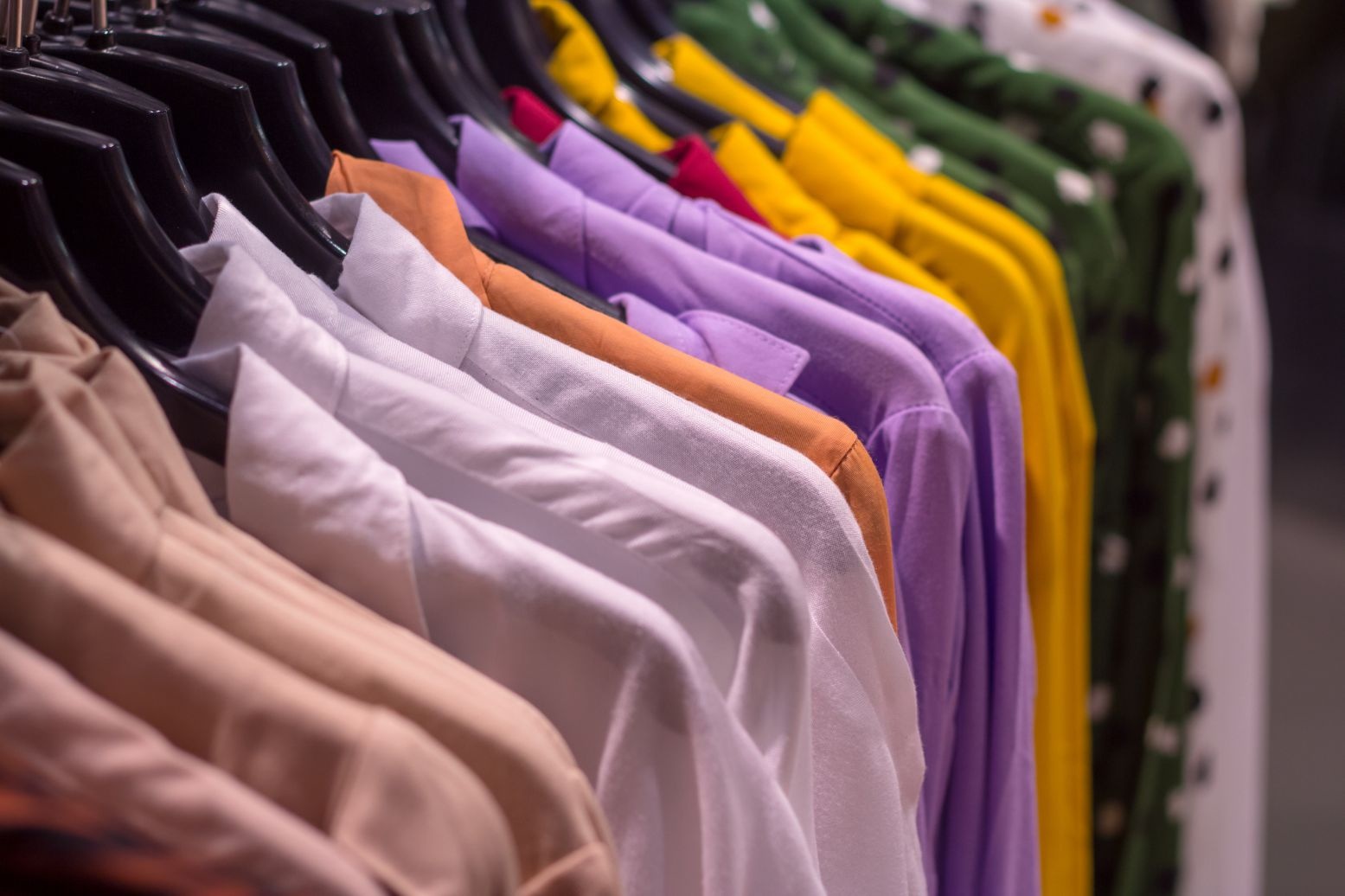Vietnamese textile and garment producers on track with 2021's goal
Mr. Vu Ba Phu, General Director of Trade Promotion Department, Ministry of Industry and Trade, said that after 17 years of implementing the program of voting national brands of seven brands, we have witnessed the continuous growth of many domestic enterprises.
By 2018, this had grown to 97, and this year we have registered 124 businesses and their brands.
However, the growth of the business community is not only in the number of enterprises participating, but also in exports, sales, contributions to the state budget, as well as their efforts in social responsibility. and job creation.
At the first selection in 2008, we saw only 30 selected companies with their products. By 2018, this had grown to 97, and this year we have registered 124 businesses and their brands.
For example, the national brand recognized enterprise in 2018 achieved revenue of about 907 trillion VND (39.4 billion USD), export turnover reached 130 trillion VND (5.6 billion USD), contributing 85 trillion VND (3.7 billion USD) to the state budget and created 340,000 jobs.
Meanwhile, this year, those figures have increased to 975 trillion dong (42.4 billion USD) and 123 trillion dong (5.34 billion USD) by 2020, with the amount contributed to the bank. State books amounted to 179 trillion VND (8.5 billion USD) and 350,000 new jobs were created - all despite the pandemic.
Vu Ba Phu also said that, the Ministry of Industry and Trade has supported businesses in difficulty. After the first months of the health crisis, the domestic market was redefined.
Right from the beginning of the year, following the direction of the Government, the Ministry of Industry and Trade has worked with ministries, branches and localities to implement supply-demand activities across the country to remove difficulties for businesses in production. and distribution.
In addition, to support businesses with high quality brands, we have also been integrating selected brands into national promotions such as the Clean Food Program to vote Vietnamese products for local people.
The integration of such programs has helped grow the domestic market since the beginning of the year, despite the economic consequences of the pandemic. This shows that the communication, promotion and support efforts of the Ministry of Industry and Trade and its agencies so far have been effective.
 |
| Vietnamese textile and garment producers on track with 2021's goal |
Vietnam has emerged as one of the leading textile-exporting countries in the world in recent years. Garments and textiles were among its major export commodities in 2020 based on total turnover, and the country reduced its reliance on agriculture, as this important part of the manufacturing sector has become an important pillar in its modern economy.
Vietnam’s textile and garment industry has been developing strongly and plays an increasingly important role in the economic growth of the country, which is now the fourth-largest garment exporter in the world market after China, the EU, and Bangladesh, with an export market share of 7.05 per cent in 2020, an increase from 5.54 per cent of 2016.
In the last five years, the competitiveness of Vietnamese garments has constantly been improving. While global exports of garments decreased by an average of 0.26 per cent per year, Vietnam’s exports still grew by an average of 6.13 per cent per year during the same period.
The many free trade agreements (FTA) that Vietnam participates in are the driving force behind the industry in the long run. Vietnam’s bilateral and multilateral FTAs continue to provide local manufacturers access to new markets, minimising the effects of growing trade protectionism. With these FTAs, new markets will also lead to higher exports and push manufacturers to develop the industry’s supply chain, so that they can take full advantage of the preferential tariffs and increase the competitiveness of their products.
 |
| Many domestic textile and garment companies have been investing in modern technologies |
Boosted production
Vietnam’s garment and textile industry consist of three sub-sectors, that is the upstream sector with fibre production, the midstream sector for fabrics and dye, and the downstream sector for the manufacturing of garments. Sub-sectors that produce fibres or fabrics are mainly meant for domestic consumption.
Meanwhile, garment production accounts for around 70 per cent of the total apparel and textile sector, with cut-make-trim (CMT) procedures the main activities. CMT accounts for about 65 per cent of total exports, while the more advanced business models, like original equipment manufacturing and original design manufacturing account for only 35 per cent.
Last year, the production volume of clothes in Vietnam amounted to 5.2 million pieces. Between 2010 and 2020, the volume had been increasing steadily year by year, before it decreased slightly in 2020 due to the pandemic. According to forecasts, the Vietnamese apparel market’s value could reach $3.13 billion by 2022.
Vietnam remains a net importer of cotton. According to Vietnam Customs, cotton imports from last August to February 2021 increased 6 per cent over the same period last year. Vietnam’s top five cotton suppliers are the US, Brazil, India, Australia, and Cote d’Ivoire, supplying over 90 per cent of cotton for the country’s production.
Vietnam also imports yarn for its weaving and knitting industry, most of which is synthetic yarn. Yarn imports to Vietnam in 2020 dropped 4 per cent over 2019. Vietnam’s imports of cotton yarn are insignificant compared to total yarn imports, reflecting a strong capability of the country to supply cotton yarn for both local consumption and exports.
 |
Attracting foreign investment
Vietnam is participating in 16 FTAs and has been considered an attractive destination for investors keen on the garment and textile industry. Foreign-invested enterprises (FIEs) made up 70 per cent of total exports. In recent years, foreign investment has shifted from CMT activities to more upstream sectors such as fabrics and dyeing.
Besides capital, these firms have been providing drive and spill-over benefits that stimulate innovation and growth of domestic producers, as well as helped scale the industry’s capacity in the past three decades.
Amid the pandemic, Vietnam’s textile and garment industry has endured thanks to shifts towards producing medical masks, personal protective equipment (PPE), and sportswear made from eco-friendly and recycled yarn. The demand for daily masks will stabilise, but PPE will need to be upgraded in quality using new technologies and new materials for medical usage.
 |
| Vietnam's textile makers are pushing quality further to increase their prestige |
Booming exports
The apparel sector has become an important contributor to Vietnam’s GDP, as it develops into an increasingly export-based economy. Garments and textiles have had one of the highest export turnovers among major commodities in Vietnam in recent years. Additionally, textile production has been among the biggest receivers of investment from both foreign and domestic sources. As a result, Vietnam has become one of the leading textile-exporting countries worldwide.
The country’s textile and garment industry aims to achieve an export revenue of about $39 billion in 2021. Although the prices of products have yet to return to the levels seen in 2019, market signals in the first quarter of 2021 showed that the industry’s targets set for 2021 are feasible.
This year, the textile industry is expected to recover thanks to the recovery of traditional orders. Some events are also supporting the shifting orders to Vietnam from China. According to the Vietnam Textile and Apparel Association, the country’s textile industry is expected to return to the export value of 2019 of $39 billion, equivalent to an 11.4 per cent growth rate over the same period. By June, the total textile export value reached $15.31 billion, up 15.5% over the same period.
The structure of Vietnam’s garment exports in 2016-2019 was relatively stable. During this period, several categories had very high average growth rates, such as children’s clothing, fabrics, underwear, workwear, sweaters, and swimwear. Ordinary and high-utility garments are further expected to achieve high export prospects.
Currently, Vietnam’s textile and garment products are present in over 200 countries and territories, a sharp increase compared to the 150 in 2016. In addition to maintaining incredible growth in main export markets, Vietnam’s textile and garment industry has achieved great successes in other markets, such as China, Russia, Cambodia, Indonesia, and Thailand.
The United States remained Vietnam’s main export market in 2020, reaching $16.06 billion in value, accounting for 45 per cent of the total export turnover. Meanwhile, exports to the EU market accounted for 14 per cent, reaching $4.99 billion, followed by Japan and South Korea with $4.82 billion and $3.57 billion, respectively.
Vietnam’s textile and garment makers are now tapping into prospects as restrictions are lifted with the FTA with Europe, in which all of Vietnam’s apparel products will be exempted from import tax after a maximum of seven years.
Vietnam Value Programme lifts prestige
The Vietnam Value Programme was approved by the prime minister with Decision No.253/2003/QD-TTg in 2003. The Ministry of Industry and Trade has been assigned to coordinate with other ministries and agencies to implement the programme. The programme’s goal is, to create an image of Vietnam as a country with a reputation for a diversity of high-quality goods and services.
By enhancing the competitiveness of Vietnamese brands in domestic and international markets and promoting the awareness of local and international distributors and consumers of Vietnamese products, the programme also aims at pushing socioeconomic development.
In the textile and garment industry, several domestic companies had been recognised as national brands within the Vietnam Value Programme. For instance, Garment 10 Corporation hit domestic revenues in 2018 of over $180 billion, with an average growth rate for three consecutive years (2018-2020) of over 15 per cent. Currently, the company has registered intellectual property rights in Vietnam, the US, the EU, and Russia, and its products are also available on Amazon, with good reviews from customers and partners.
Meanwhile, the Merriman men’s fashion brand of Hoa Tho JSC is one of the major brands in the world and the domestic market. The products are manufactured with eco-friendly materials and offer an elegant and luxurious design. Another example is Nha Be Garment JSC, which is striving to be one of Vietnam’s leading brands in the garment sector. The company chooses high-quality materials and aims to make its customers feel comfortable in most weather conditions.
Furthermore, Phong Phu Corporation and Viettien are both applying modern machinery and equipment, with some being imported from markets such as Japan. Both companies are offering diverse designs in clothing and household textiles like towels.
What the stars mean:
★ Poor ★ ★ Promising ★★★ Good ★★★★ Very good ★★★★★ Exceptional
 Tag:
Tag:
Related Contents
Latest News
More News
- Hanoi farms over 100 pomelo producing areas (December 05, 2024 | 18:05)
- Vietnam ranks among top three global shrimp exporters (August 07, 2024 | 16:13)
- Unlocking the potential of Vietnamese medicinal herbs (October 05, 2023 | 11:29)
- Hanoi promotes trade, investment, tourism cooperation with central provinces (July 10, 2023 | 09:57)
- VICO Fresh coconut creates buzz at trade show (May 26, 2023 | 20:20)
- Vietnam strengthens green branding (April 20, 2023 | 17:18)
- Increasing trade connectivity between Hanoi and localities (November 24, 2022 | 18:00)
- Vietnam recognises 325 products as national brands (October 26, 2022 | 17:13)
- Brand Finance Forum 2022: Honouring Vietnam’s 50 most valuable brands in 2022 (September 22, 2022 | 09:32)
- Ample opportunities for Vietnamese businesses in trade (May 20, 2022 | 07:00)




























 Mobile Version
Mobile Version